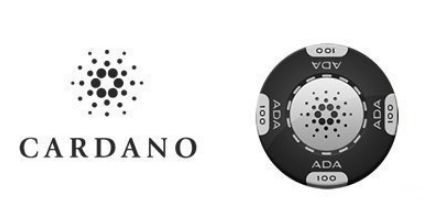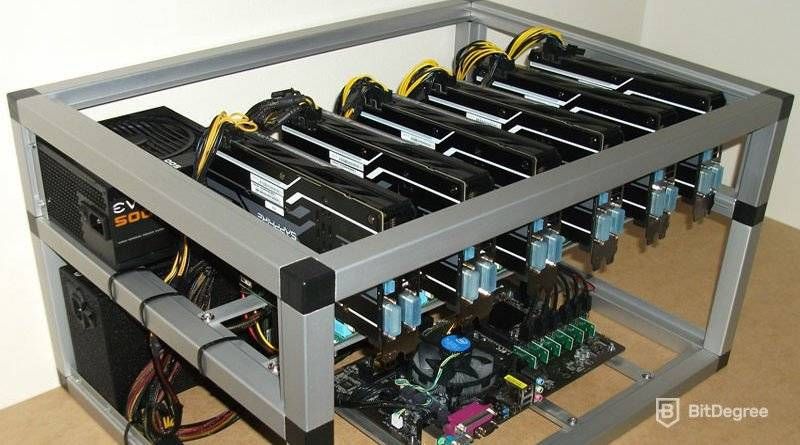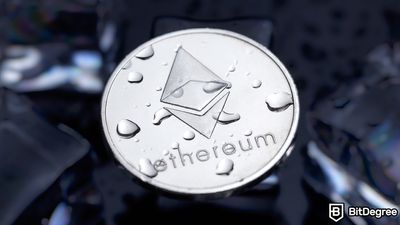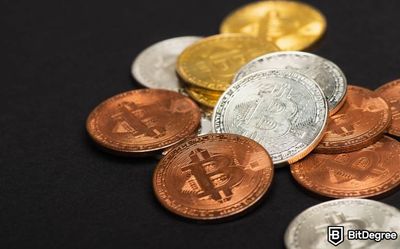If you’ve heard about Cardano and Ethereum, but you're not sure how they work? Or maybe you’re looking to find out which protocol has the best technology? Either way, I’ve got everything covered in this Cardano vs Ethereum guide!
By the way, did you know that ADA Cardano is often called the "Ethereum killer”?
Anyway, in this Cardano vs Ethereum guide, I am going to start by explaining the basics of each project. After that, I am then going to talk about how the technology works, including how each of the blockchains verifies transactions without a third-party intermediary.
Finally, I will finish by talking about how each of the projects has performed so far. So, by the end of reading this article, you will have all the information you need to decide which of the two protocols you think is the best!
Well, what are you waiting for? The first part of my Cardano vs Ethereum guide is going to begin by explaining the basics of each blockchain!
Let’s start with Ethereum!

Did you know?
Want to get smarter & wealthier with crypto?
Subscribe - We publish new crypto explainer videos every week!
What is a Crypto Mining Pool? Is it Worth it? (Beginner-Friendly)


Table of Contents
Key Elements of Cardano and Ethereum
What is Ethereum?
Ethereum was created in 2015 by a young developer, Vitalik Buterin. It became the first-ever blockchain project to allow people to create smart contracts. As a result, unlike Bitcoin, Ethereum can do much more than just process financial transactions.
In its most basic form, a smart contract allows people from anywhere in the world to agree without needing a trusted third party. Instead, pre-defined conditions are entered into a coded smart contract and when these conditions are met, the smart contract automatically releases the funds.
To understand how useful smart contracts can be, take a look at the following example.
- Chris wants to buy some insurance on his flight
- If his flight is delayed or canceled, he gets a full refund
- If the flight is on time, he loses his insurance fee
- Chris enters into a smart contract by depositing the fee
- Once the flight departs, the smart contract can scan thousands of independent websites to find out the exact time it left off
- If it left on time, John automatically loses his insurance fee
- If it was delayed or canceled, then he automatically receives a full refund
- All of this was possible without a third party, using a smart contract agreement
The above example could be applied to hundreds of different scenarios. By removing the need for a third party, contract agreements are faster, cheaper and more efficient.
Just like the Bitcoin client, Ethereum has its blockchain that allows people to send and receive coins. Ethereum has its cryptocurrency called Ether (ETH for short). Officially, there is no maximum supply to the total amount of ETH that can be issued.
At the time of writing in July 2018, there are just over 100 million coins in circulation. However, according to the founder, Vitalik Buterin, likely, this amount will not increase much further.
The Ethereum network is decentralized, meaning that it is controlled by no single person or authority, nor is it backed by any central bank or nation-state. Instead, each transaction (including smart contracts) is verified by the community.
Anyone can connect a device to the Ethereum system to help confirm transactions. In return, they receive additional ETH as a reward. Don’t worry, I’m going to talk about this in more detail later on!
So, now that you know what is Ethereum, the next part of my 'Cardano vs Ethereum' guide is going to cover the basics of Cardano!
What is Cardano?

Just like Ethereum, Cardano is a blockchain project that specializes in smart contract technology. It was first created in 2015 by an organization called Input Output Hong Kong (IOHK), which is led by a well-known cryptocurrency expert called Charles Hoskinson. While Ethereum is called a second-generation blockchain, Cardano claims to be a third-generation blockchain.
This means that the founders believe their project is much more advanced than Ethereum, which is why it is sometimes called the “Ethereum Killer”.
Cardano also has its cryptocurrency called the ADA coin. Just like ETH, the ADA coin can be used to send or receive funds, wallet-to-wallet.
The overall purpose of Cardano is to find the perfect balance between servicing the needs of its users, alongside that of regulators. The team feels that this is important because eventually, they think that cryptocurrency is going to be regulated in the same way as the financial services industry.
People like Cardano coin because it is supported by a team of academic leaders, researchers, and scientists, who each help to develop the blockchain. Although the project is still in its very early days, the long-term objective is that it will be able to provide fast, cheap and highly scalable transactions on a global basis. If it does, it could one day provide a bridge between cryptocurrency and the real-world finance sector.
Unlike lots of other projects, which often decide to 'fork' the original code of a different blockchain, the team at ADA Cardano is building their protocol from scratch. The programming language that supports the blockchain is called "Haskell", and it is based on an advanced form of mathematics.
Although at first, it might sound like the two projects are very similar, there are some big differences! Therefore, in the next part of my 'Cardano vs Ethereum' guide, I am going to talk about how each of the two blockchains performs!
Performance
Ethereum
Firstly, when using the Ethereum blockchain to send funds to another use, each transaction normally takes about 16 seconds. This is quite fast, especially when you compare it to traditional payment systems.
It doesn’t matter if you are sending funds to someone located in the same town as you or to someone located in a different country, the transaction time is always the same.
When it comes to transaction fees, this all depends on how busy the network is. For example, during its first few years, transactions would only cost a few cents. However, as it has become more popular, this has increased.
When Ethereum experienced it the busiest period in early 2018, transaction fees were costing as much as $4. However, at the time of writing in July 2018, this has since gone down to just under $1.
Nevertheless, some people still think this is too high because it makes it unsuitable for micro-payments. To clarify, micro-payments are really small financial transactions that are sometimes less than a cent. This is one of the sectors that blockchain technology was supposed to help, so unless Ethereum can reduce its fees significantly, it wouldn’t be suitable.
A further issue with the current Ethereum blockchain is that it is also very limited to the number of transactions it can process at one time. In the cryptocurrency industry, this is called scalability, and it is based on how well a network handles large amounts of activity.
In the case of Ethereum, the blockchain can process just 15 transactions per second. To give you an idea of why this is a problem, Visa can process a maximum of 50,000 per second! Furthermore, popular cryptocurrency exchange Binance can process more than 1.4 million transactions per second, so Ethereum has a long way to go.
Fortunately, Vitalik Buterin and his team of developers are aware of this and are working on a few solutions, which I will discuss in more detail later.
So, now that you know what is Ethereum and how it performs, the next part of my 'Cardano vs Ethereum' guide is going to look at how Cardano compares!

Did you know?
Want to get smarter & wealthier with crypto?
Subscribe - We publish new crypto explainer videos every week!
What is IOTA's Tangle? IOTA & mIOTA Animated Explainer



- A very well-known crypto exchange platform
- More than 500 different cryptos available
- Two-factor authentication
- Over 500 different cryptocurrencies available
- Strong security
- Small withdrawal fees

- Very low trading fees
- Exceptional functionality
- Mobile trading app
- Very competitive trading fees
- An intuitive mobile app
- Up to 100x leverage available

- Secure and reliable
- Low fees
- A good amount of fiat currencies accepted
- Reputable exchange
- Multiple fiat currencies are accepted
- Relatively low trading fees
Cardano
Before I continue, I thought I better make it clear that Cardano is still in its very early days of development. The team claims that they are building one of the fastest, cheapest and most scalable blockchains in the world. However, they still have a long way to go. Until they have a working product, it is important to understand that at this stage everything is theoretical!
Now that I have got that out of the way, let’s take a look at what the team claims the blockchain will be able to do...
The ultimate goal is to be able to offer near-instant and free transactions, allowing users to send and receive funds, create smart contracts and build decentralized applications (dApps). Furthermore, it is hoped that once the product is fully functional, it will be able to scale to unlimited transactions.
Although I will explain this in more detail later on, the way that ADA Cardano is being built is that the more people that use the network, the cheaper, faster and more scalable it will become.
In reality, it remains unclear how many transactions Cardano can process right now. The team did a test in late 2017 that resulted in the blockchain achieving 257 transactions per second. However, the main problem is that not enough people are using it to transfer funds, so it hasn’t been put to its limits yet.
Official transaction times also vary, although according to regular users it currently averages between 5-7 minutes. Therefore, as it stands, Ethereum can process much faster transactions at just 16 seconds. However, Cardano is still being built and it can already handle significantly more transactions per second, with this number expected to increase very shortly.
So, now that you know how the two projects perform, as well as what Cardano hopes to achieve, the next part of my 'Cardano vs Ethereum' guide is going to talk about how transactions are verified!
Consensus - How are Transactions Verified?
Ethereum
Earlier in this 'Ethereum vs Cardano' guide, I mentioned how both of these blockchains are decentralized. This means that transactions are verified without the need for a centralized third party. To do this, both blockchains use a 'consensus mechanism'.
A consensus mechanism determines how the blockchain reaches consensus. In other words, how can we trust that the transaction is valid? Every blockchain achieves this differently, however, they are all based on an advanced study of mathematics called “Cryptography”.
Moving on, Ethereum uses a consensus mechanism called “Proof of Work”, which is the same model that Bitcoin uses. To verify a transaction, the system generates a random sum that is so complex, no human could solve it. Instead, it requires computational power.

Anybody can become an Ethereum 'miner' by connecting a device to the Ethereum network which helps verify Ether transactions. In return, the 'miner' that solves the sum is rewarded with additional ETH. Thousands of miners compete with each other to become the first device to solve the sum. Whoever solves it first, wins the ETH reward!
However, there are a couple of issues with Ethereum’s Proof of Work model. Firstly, as more and more people use the network, the amount of electricity required to confirm transactions gets higher. Not only does this make mining less profitable, but it is also really bad for the environment!
Using the Proof of Work model also limits the number of transactions that can be verified. As I mentioned earlier in this Ethereum vs Cardano guide, the network can only handle 15 transactions per second. This is significantly less than most other new blockchains.
This is why the Ethereum team is looking to upgrade to a new consensus mechanism called Proof of Stake. To support this further, the team is also working on two upgrades called “Sharding” and “Plasma”. It is hoped that these updates to the network will allow faster, cheaper and more scalable transactions.
So, now that you know how transactions are verified on the Ethereum blockchain, the next part of my Cardano vs Ethereum guide is going to look at how Cardano does it...

Did you know?
Want to get smarter & wealthier with crypto?
Subscribe - We publish new crypto explainer videos every week!
What is IOTA's Tangle? IOTA & mIOTA Animated Explainer



- A very well-known crypto exchange platform
- More than 500 different cryptos available
- Two-factor authentication
- Over 500 different cryptocurrencies available
- Strong security
- Small withdrawal fees

- Very low trading fees
- Exceptional functionality
- Mobile trading app
- Very competitive trading fees
- An intuitive mobile app
- Up to 100x leverage available

- Secure and reliable
- Low fees
- A good amount of fiat currencies accepted
- Reputable exchange
- Multiple fiat currencies are accepted
- Relatively low trading fees
Cardano
Cardano is using a variation of 'Proof of Stake', which it calls "Ouroboros". The protocol reaches consensus in a different way to Ethereum's Proof of Work model, which I will explain now.
Instead of getting miners to solve complex mathematical sums, Proof of Stake uses 'forgers'. The difference here is that instead of machines solving complex mathematical sums, the successful forger is selected randomly by a cryptographic algorithm.
However, to have the opportunity to become a forger, you are required to “stake” your coins, which would be the ADA coin in Cardano's case. Staking is where you transfer your coins to a special wallet, where they are "frozen" and then used to verify transactions on the network. You cannot spend these coins for as long as your coins are staked.
The more Cardano coins that you stake, the greater chance you have of winning the reward. Simple!
The idea is that the more coins you stake, the more motivated you will be to ensure the system remains secure. If a forger did attempt to hack the network or process a malicious transaction, the forger would lose all of their stakes as a punishment!
The Ouroboros model that Cardano uses is really good because unlike other Proof of Stake blockchains, there is no minimum amount that you have to stake.
So, you now know how the two blockchains verify transactions. The final part of my 'Cardano vs Ethereum' guide is going to talk about how the projects have performed so far, as well as what the future holds for them. First, though, check out the below comparison table to recap on some of the things I have spoken about above.
Comparison Table
| Consensus mechanism | Transactions p/s | Market value | Circulating supply | Launch Date | Team/Organisation | Transaction Fees | |
| Cardano | PoS Ouroboros | 257 | 3.2 Billion | 25 Billion | September 2015 | IOHK | <$1 |
| Ethereum | PoW | 15 | 44 Billion | 100 Mil | July 2015 | Ethereum Foundation | <$1 |
Ethereum vs Cardano: The Story So Far and The Future
Since Ethereum was first launched in 2015, it has performed well. As the first-ever blockchain project to host smart contract technology, it is now the second most popular cryptocurrency in the world.
To put this success in numbers — in 2017 alone, the value of ETH increased by more than 10,000%! Furthermore, in December 2017, it reached its all-time high of $1,389, which amounted to a total market capitalization of just over $130 billion!
The Ethereum platform also hosts the majority of initial coin offerings (ICO’s), which is when new start-ups perform crowdfunding for blockchain projects. More and more dApps are also beginning to use the Ethereum blockchain, which gives the Ether coin real-world value.
However, as my Cardano vs Ethereum guide mentioned earlier, the project needs to solve its scalability issues. If the team want to achieve their dream of global adoption, then the planned Proof of Stake, Plasma and Sharding upgrades must be a success.
On the other hand, there are lots of other blockchains that are looking to replace Ethereum as the most popular smart contract platform, which is why they are called “Ethereum killers”. One of these is Cardano, who believe they are building the most advanced smart contract protocol in the industry.
Although the Cardano coin was only released in late 2017, it has also performed well. It was initially worth just $0.02 a coin, however, just a few months later in January 2018, this increased to a remarkable $1.22! This amounted to an increase of more than 6,000%, resulting in a total market capitalization of $32 billion.
Since then, like the rest of the cryptocurrency industry, its value has gone down quite significantly.
Various people in the community are becoming frustrated at how long the team is taking to finish the development process. In response, Cardano claims that instead of rushing, they want to take their time to ensure that they build the best product possible.
If you are thinking about investing Cardano and its ADA coin, you have to remember that the product is a long way from achieving its goal of unlimited, instant and free transactions. Although the team contains some clever academics, scientists and developers, there is no guarantee that the blockchain will be able to achieve what it claims.
According to the Cardano roadmap, future development plans also include building quantum-resistant addresses, on-chain voting, and off-chain payments. The best thing you can do is regularly check the official development timeline, which you can do by clicking this link.
Cardano vs Ethereum: Conclusion
And that’s the end of my Cardano vs Ethereum guide! If you have read it from start to finish, you should now have a really good understanding of how the two blockchains compare.
I have also explained how the technology works, which included how transactions are verified on both of these blockchains.
The Cardano vs Ethereum discussion is a hard one to have. Simply because one cryptocurrency is already established with the second-largest market capitalization, and the other is still building its product.
It is also difficult to know what impact Cardano will have if Ethereum’s planned upgrades are successful. If Ethereum can process thousands of transactions per second, as well as increase its speed, then other smart contract platforms like Cardano might quickly become irrelevant.
However, what is your views on the Cardano vs Ethereum argument? Do you think Cardano will achieve its objectives and become the most popular smart contract platform? Or do you think Ethereum will always be the number one?
Feel free to let me know your thoughts in the comments section below!












